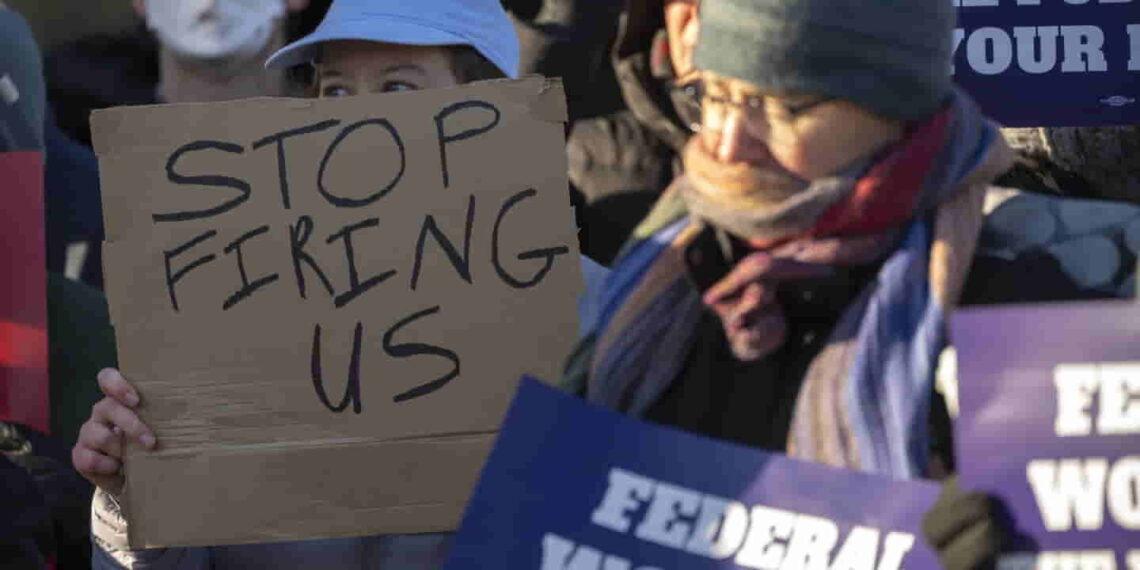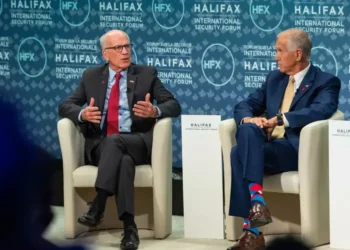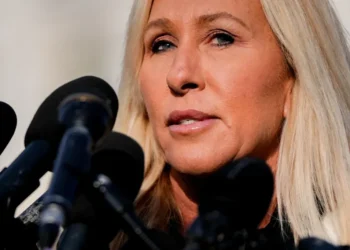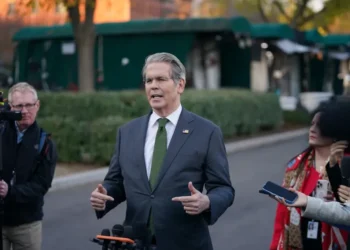Anger, Chaos, and Confusion as Federal Workers Face Mass Layoffs
Thousands of federal employees across the U.S. were left reeling Friday as the Trump administration moved aggressively to shrink the federal workforce, ordering agencies to fire probationary employees who have yet to qualify for civil service protections.
Shockwaves Across the Country
While much of the administration’s focus has been on disrupting bureaucracy in Washington, the layoffs extend far beyond the capital. Workers from Michigan to Florida were blindsided by termination notices, leaving many confused, angry, and uncertain about their future.
Adding to the chaos, some employees received layoff notices despite already accepting buyout agreements—which were supposed to guarantee their salaries until September 30. By Friday evening, the Office of Personnel Management (OPM) acknowledged that some employees may have been fired in error, promising that buyout agreements would be honored.
“This has been slash and burn,” said Nicholas Detter, a natural resource specialist in Kansas, who was abruptly fired via email Thursday night. “None of this has been done thoughtfully or carefully.”
Scope of the Firings Remains Unclear
The White House and OPM declined to say how many probationary employees—those typically on the job for less than a year—have been let go so far. However, government records show that as of March 2024, 220,000 workers had less than a year of service.
Agencies were given a deadline of 8 p.m. Tuesday to complete the layoffs, according to a source familiar with the plan who spoke on condition of anonymity.
A Sweeping Effort to Cut the Workforce
The layoffs are part of a broader initiative led by Elon Musk’s Department of Government Efficiency (DOGE) to downsize federal employment. In an executive order Tuesday, Trump instructed agency leaders to prepare for “large-scale reductions” after a voluntary buyout program attracted only 75,000 participants.
Who’s Being Laid Off?
- Veterans Affairs (VA): More than 1,000 employees, including researchers working on cancer treatment, opioid addiction, prosthetics, and burn pit exposure.
- Education Department: Dozens of special education specialists and student aid officials were dismissed, according to a workers’ union.
- Centers for Disease Control and Prevention (CDC): Nearly 1,300 probationary employees—one-tenth of the agency’s workforce—are being forced out.
- Department of Agriculture: Secretary Brooke Rollins confirmed that layoffs “will be forthcoming” after welcoming Musk’s team with “open arms.”
“Clearly, it’s a new day,” Rollins said at the White House. “I think the American people spoke on November 5th—they believe government is too big.”
Workers Speak Out
Veteran Fired From VA Medical Center
Andrew Lennox, a 10-year Marine veteran, was part of a supervisor training program at the VA Medical Center in Ann Arbor, Michigan. On Thursday evening, he received an unexpected email: he was fired.
“In order to help veterans, you just fired a veteran,” said Lennox, 35, who served in Iraq, Afghanistan, and Syria.
Despite starting his VA career just three months ago, he said he “would love nothing more” than to continue helping veterans.
Foreign Affairs Specialist Laid Off in Middle of a Meeting
David Rice, a disabled Army paratrooper, was working as a foreign affairs specialist at the Department of Energy when he was abruptly fired.
Rice had just logged into a virtual meeting with Japanese representatives on Thursday night when he saw an email notifying him of his termination.
“It’s just been chaos,” said Rice, 50, who had recently bought a home in Melbourne, Florida, after securing his federal job.
Although Rice supports the administration’s goal of improving government efficiency, he strongly objects to what he calls a “random, scattershot approach.”
Fired Despite Signing Buyout Agreements
Some employees, like Nicholas Detter, had already agreed to the administration’s buyout deal, expecting it to shield them from sudden layoffs. Instead, they received immediate termination notices.
Detter, 25, had worked for the Natural Resources Conservation Service at the Department of Agriculture, helping farmers reduce soil erosion and water pollution. Despite receiving “completely positive” performance reviews, he was fired Thursday night.
“You’re just a pawn in a much bigger struggle,” Detter said. “Elon Musk seems to have taken on this personal mission to shrink the government.”
His Kansas office, which already struggled with understaffing, saw two out of four employees laid off.
Unions and Lawmakers Push Back
- The National Treasury Employees Union (NTEU) and other labor groups filed a lawsuit Thursday, arguing the terminations are “unlawful.”
- Doreen Greenwald, NTEU president, warned that these cuts “will have a devastating impact on agency missions.” Many agencies are already struggling due to years of frozen or slashed budgets.
- Advocacy group Democracy Forward filed a complaint with the Office of Special Counsel, requesting an investigation into whether the mass firings violated federal personnel policies.
Protests erupted Friday morning outside the Hubert H. Humphrey Building in Washington, with workers fearing this is just the beginning.
“They’re picking us off, one by one,” said a federal contractor who declined to be named. “First, it’s the probationary workers. Then we’re next.”
Murkowski: “This Won’t Fix the Federal Budget”
Republican Senator Lisa Murkowski (Alaska) criticized the indiscriminate cuts, writing on X (formerly Twitter):
“Indiscriminate workforce cuts aren’t efficient and won’t fix the federal budget.”
Murkowski’s office has demanded answers from federal agencies but has received “evasive and inadequate” responses so far.
Will the Layoffs Reduce the Deficit?
Experts say the cuts will have little impact on the national deficit. The federal government spends $270 billion annually on civilian workers, with 60% going to Defense, Homeland Security, and Veterans Affairs.
Even if every federal employee were fired, the U.S. would still run a deficit exceeding $1 trillion.
Additionally, these mass layoffs could hurt economic data—potentially turning job growth negative in upcoming reports. The last time the economy lost jobs was in December 2020, during the pandemic.
“It’s very plausible that job growth could turn negative,” said Martha Gimbel, executive director of the Budget Lab at Yale University.
Impact Beyond the Workers
For those fired, the impact isn’t just personal—it affects the people they serve.
“We were actually out there helping people,” said Rice, the former Department of Energy employee. “This work mattered.”
This article was rewritten by JournosNews.com based on verified reporting from trusted sources. The content has been independently reviewed, fact-checked, and edited for accuracy, neutrality, tone, and global readability in accordance with Google News and AdSense standards.
All opinions, quotes, or statements from contributors, experts, or sourced organizations do not necessarily reflect the views of JournosNews.com. JournosNews.com maintains full editorial independence from any external funders, sponsors, or organizations.
Stay informed with JournosNews.com — your trusted source for verified global reporting and in-depth analysis. Follow us on Google News, BlueSky, and X for real-time updates.














